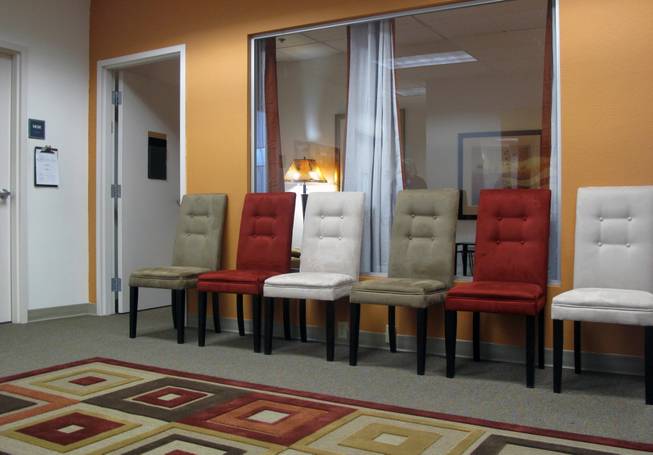
Chairs line a wall of a main meeting room at the Rape Crisis Center’s Signs of Hope Counseling Center. The center, which opened Feb. 16, 2011, serves victims of sexual assault age 12 and older. Behind the chairs is a private, smaller room for discussions with victims and their family and friends.
Tuesday, Jan. 30, 2018 | 2 a.m.
Related news
The Rape Crisis Center of Las Vegas saw an increase in people receiving counseling in 2017, and officials credit the spike to the #MeToo movement.
“The widespread attention on sexual assault and sexual harassment fostered by the #MeToo and female empowerment movements help victims know that they are not alone. Seeing others, especially well-known celebrities, publicly tell their stories, may inspire them to seek help,” said Daniele Dreitzer, the crisis center’s executive director, in a statement. “We experienced this effect first-hand with year-over-year increase in calls to our hotline and inquiries to our website as the #MeToo campaign escalated and gained momentum.”
The crisis center served 100 clients per month last year, an increase of 25 percent from 2016 and double the number from 2015, it released Monday in an annual report.
Additionally, it assisted 747 victims in 2017 through a partnership with University Medical Center, where sexual-assault victims can undergo a free exam by a specially trained sexual assault nurse examiner. This was a slight increase from 2016 when the group assisted 715 people at UMC.
The forensic sexual assault exams at UMC are optional and represent a fraction of the total number of people experiencing and reporting sexual assault, Dreitzer said.
“As more people seek services, it is our mission to ensure they receive the help they so clearly need,” she said.
The 747 victims treated at UMC ranged in age from 12 to 65, according to the report. Of that, 20 percent reported the assault in an alcohol-serving setting such as a bar or nightclub. Also, 27 percent of the victims were ages 18 to 24; an additional 27 percent were 25 to 34. Five percent of the victims were male.
